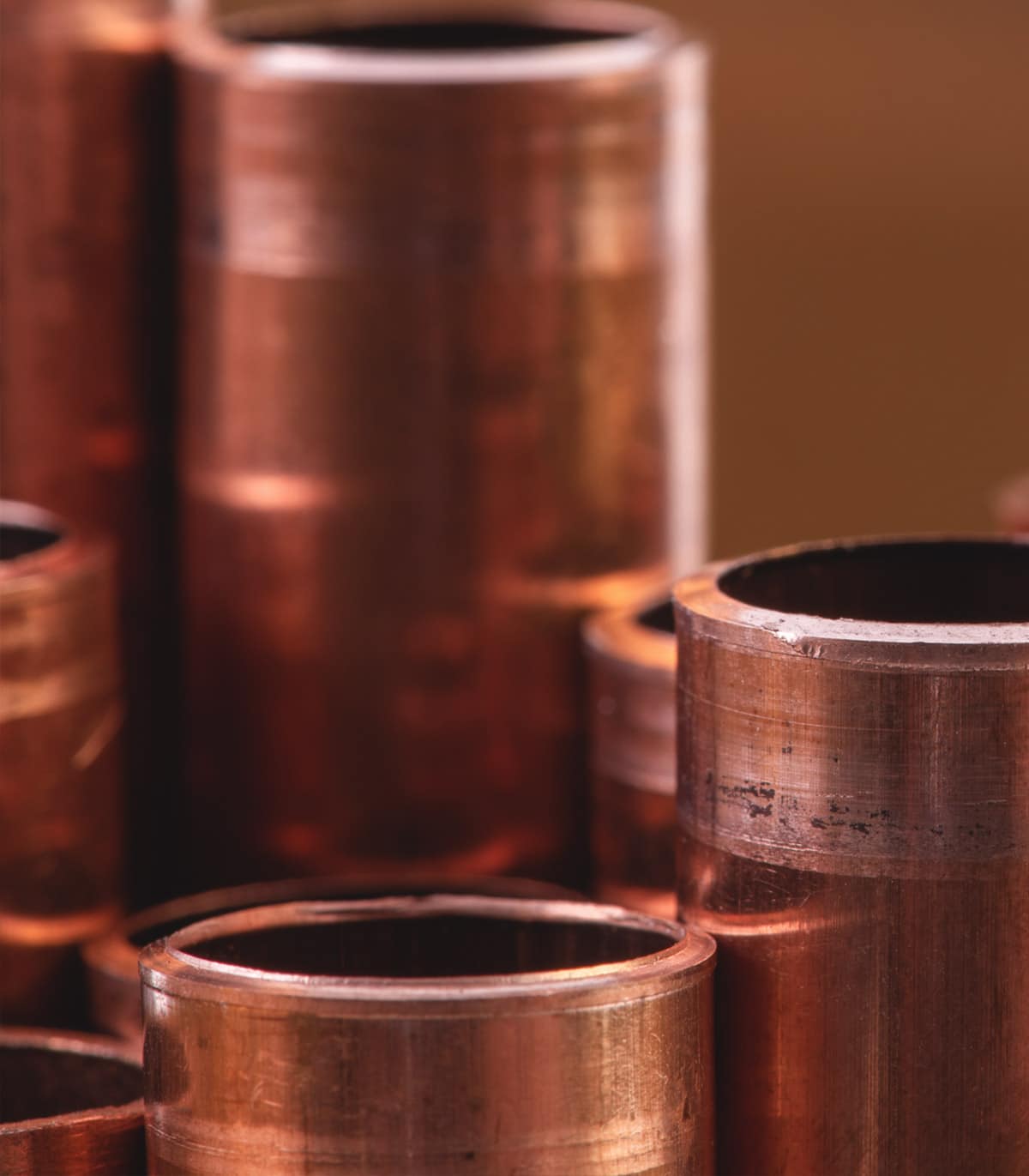Exploring the Versatility and Durability of Cutting-edge Copper Products in Modern Layout
Exploring the Versatility and Durability of Cutting-edge Copper Products in Modern Layout
Blog Article
How Copper Products Add To Lasting Practices in Numerous Markets
In sustainable energy systems, for instance, copper boosts the capability of solar and wind modern technologies, while its application in construction decreases waste via long life. As markets seek to embrace more sustainable methods, the duty of copper might show crucial in attaining environmental objectives.
Copper in Renewable Resource
Copper plays an important duty in the improvement of sustainable power innovations, working as a vital conductor in numerous applications. Its outstanding electric conductivity and resistance to corrosion make it a suitable material for electrical wiring, which is crucial in photovoltaic panels, wind generators, and power storage systems. In solar photovoltaic or pv systems, copper is made use of in the affiliations and wiring, enabling effective power conversion from sunlight to electrical energy.
In wind energy, copper is integral to the generators and transformers that convert kinetic energy into electric energy, making sure optimum performance and reliability. In addition, the need for electric lorries (EVs) is raising, with copper being an essential part in batteries, motors, and charging framework. The change to EVs considerably improves the need for copper, as these vehicles commonly utilize 4 times extra copper than conventional inner burning engine lorries.
As the world seeks to minimize environment change and change to lasting energy sources, copper's duty comes to be increasingly vital. The material not just boosts the efficiency and toughness of renewable resource systems however also supports the broader objective of reducing greenhouse gas exhausts and promoting a lasting future.
Eco-Friendly Building And Construction Materials
In the last few years, there has actually been a remarkable change in the direction of the fostering of environmentally friendly construction products in feedback to expanding ecological concerns. This adjustment is motivated by the requirement for sustainable options that reduce eco-friendly footprints while maintaining architectural honesty and visual appeal.
Copper, known for its sturdiness and recyclability, has become a principal in this field. It can be used in roof, pipes, and electric systems, adding to energy efficiency and minimizing waste. Copper's long life indicates less replacements in time, more enhancing its sustainability account.
Furthermore, materials such as bamboo, reclaimed wood, and reused steel are acquiring appeal. These alternatives not only supply lowered environmental impact however additionally promote source conservation. As developing codes increasingly highlight sustainability, home builders and designers are integrating these products into their tasks, cultivating development in layout.
The enhancing adoption of eco-friendly building products mirrors a wider commitment to sustainability in the developed setting. By focusing on these products, the building and construction sector can considerably decrease its carbon footprint, line up with governing criteria, and support a healthier community for future generations. This pattern notes a crucial action in the direction of a much more lasting future in building.
Copper's Role in Health care
Recent studies have highlighted the significant duty of copper in health care settings, specifically due to its antimicrobial residential or commercial properties. Copper surface areas have been shown to lower the existence of virus, including bacteria and infections, by approximately 99.9% within a short duration. This exceptional effectiveness makes copper a vital material for high-touch surface areas in health centers, such as doorknobs, bed rails, and IV posts, therefore adding to improved infection control measures.
Along with its direct antimicrobial impacts, copper additionally contributes in the wider context of medical facility sustainability (Copper Products). By incorporating copper right into clinical equipment and home furnishings, medical care centers can minimize the occurrence of healthcare-associated infections (HAIs), which not you could try these out only boosts individual outcomes yet likewise decreases the prices connected with prolonged health center keeps and extra therapies
Additionally, copper's durability and recyclability line up with lasting methods, permitting liable source management. As health care systems significantly prioritize both individual safety and security and ecological stewardship, the assimilation of copper products is ending up being much more common. This dual advantage emphasizes copper's essential payment to a healthier, much safer, and more lasting medical care setting.
Sustainability in Transport

Moreover, copper's toughness and rust resistance add to the longevity of transport facilities (Copper Products). In rail systems, for example, copper elements enhance the reliability and effectiveness of signaling and power systems, crucial for reducing delays and power consumption. Additionally, copper's function in renewable resource systems, such as solar and wind, sustains sustainable transportation options by providing tidy energy for electric transit choices
Investments in copper modern technology not just foster sustainability but likewise stimulate financial growth and job creation in green markets. As industries strive to satisfy strict environmental guidelines, the application of copper items in transportation emerges as an essential technique in attaining sustainability goals and promoting a cleaner, much more efficient future.
Copper and Circular Economic Climate
As the globe progressively accepts sustainability, the duty of copper in the circular economy becomes ever much more considerable. Copper's intrinsic properties-- such as its sturdiness, conductivity, and recyclability-- placement it as a crucial product in a resource-efficient economic situation. The round economic climate aims to lessen waste and maximize source use through recycling and reusing products, and copper excels in this respect.
The steel can be recycled indefinitely without loss of high quality, making it an ideal candidate for lasting methods throughout different sectors, consisting of building, electronic devices, and renewable resource. By reprocessing and recovering copper from end-of-life products, industries can substantially reduce the requirement for virgin products, thereby decreasing ecological impacts related to mining and processing.
Moreover, the combination of copper right into circular economic climate structures not only preserves resources yet also cultivates development. Organizations that prioritize copper reusing add to a more sustainable supply chain, boosting their competition while aligning with regulatory needs and customer choices for eco liable products.
Final Thought
To conclude, copper products substantially add to sustainable techniques throughout multiple sectors. Their crucial function in improving renewable resource technologies, advertising environmentally friendly building and construction materials, sustaining infection control in health care, helping with sustainable transport, and personifying the principles of a round economic situation emphasizes the adaptability and importance of copper. By integrating copper into various applications, sectors can accomplish better efficiency, decrease ecological effect, and align with worldwide sustainability goals, eventually fostering a more sustainable future.

Copper's superb conductivity makes it a favored product in electrical automobile (EV) systems, enhancing power effectiveness and performance. In addition, copper's role in eco-friendly power systems, such as solar and wind, supports sustainable transportation remedies by providing tidy power for electric transit alternatives.
Their crucial role in improving sustainable power modern technologies, advertising green building and construction materials, supporting infection control in healthcare, helping with lasting transport, and symbolizing the principles of a circular economic climate highlights the convenience and value of copper.
Report this page